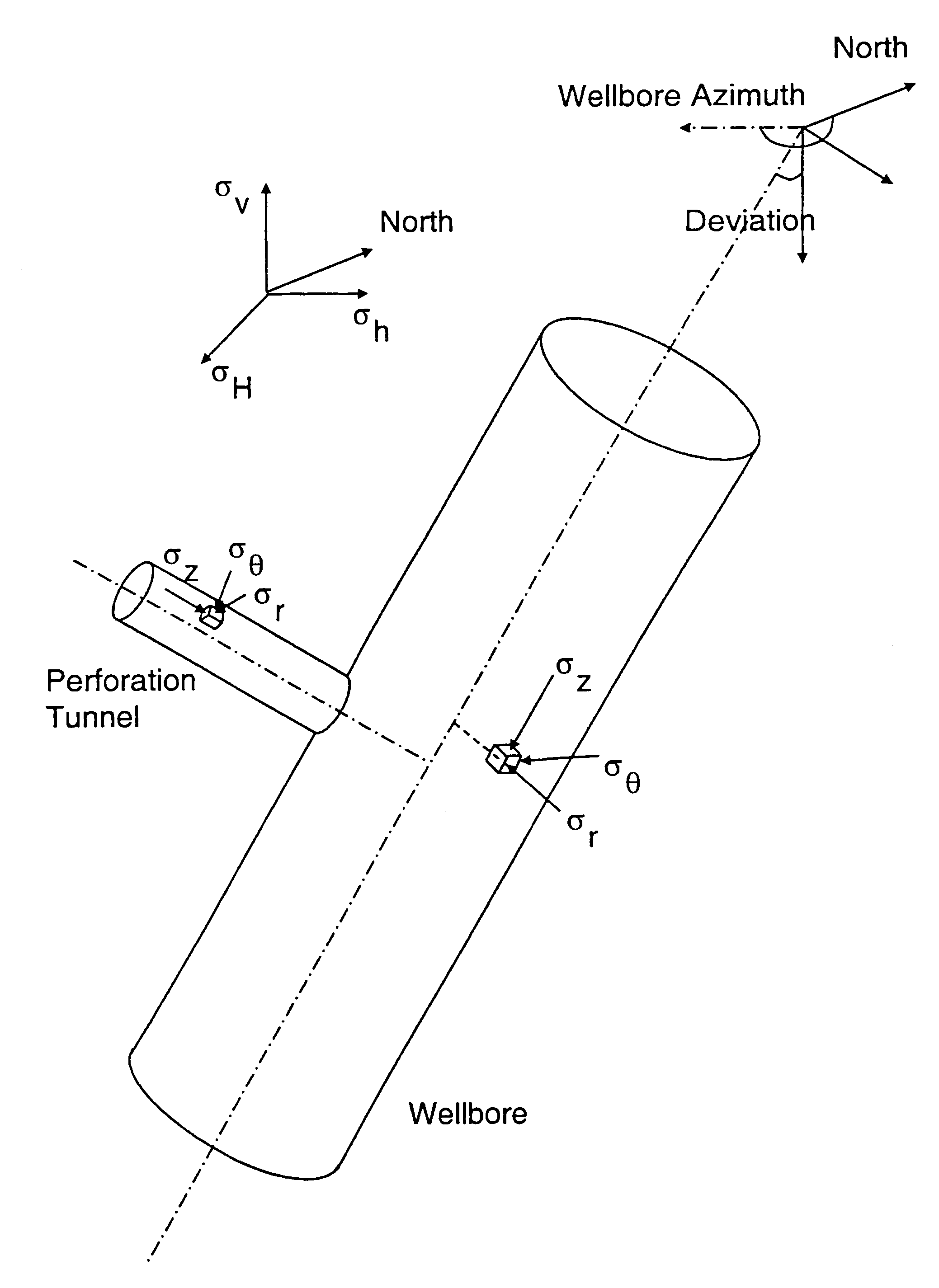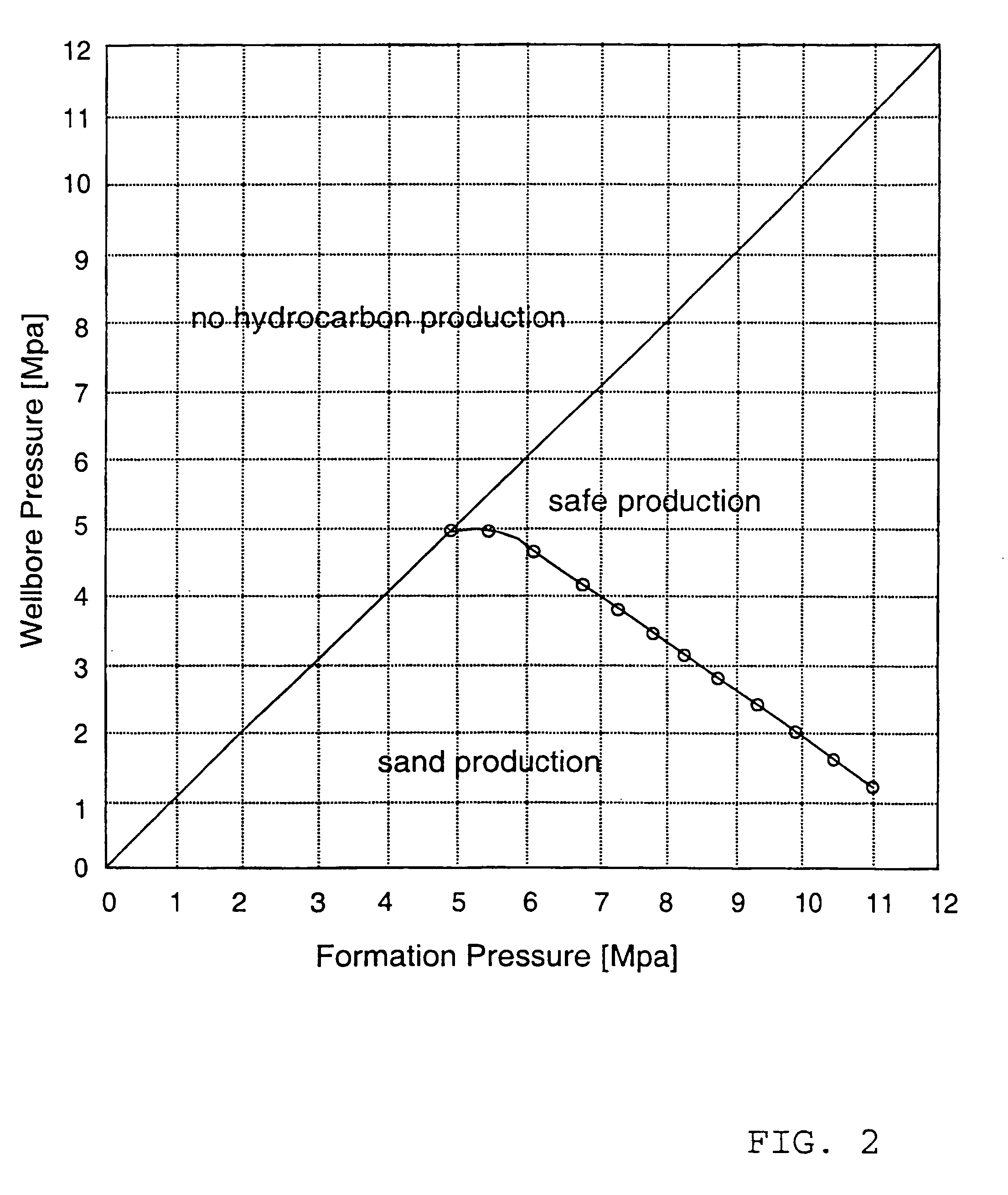Cavity stability prediction method for wellbores
a wellbore and stability prediction technology, applied in the direction of wellbore/well accessories, apparatus for force/torque/work measurement, survey, etc., can solve the problems of formation stability problems not only encountered, and the rock near the wellbore will collaps
- Summary
- Abstract
- Description
- Claims
- Application Information
AI Technical Summary
Benefits of technology
Problems solved by technology
Method used
Image
Examples
Embodiment Construction
[0022]The underlying idea is to use log-data (mainly sonic data) for the derivation of rock elastic constants and formation strength parameters. These parameters can be used with estimates of in-situ stresses and pore pressure in a 3-D poro-elastic model and Mohr-Coulomb failure criterion for the calculation of the critical draw-down pressure.
[0023]The method described below assumes clean sandstone as formation material.
[0024]The bulk porosity can be derived from the bulk density ρb of a fluid saturated porous rock, which is given by
ρb=φρf+(1−φ)ρs, [1]
where ρs is the density of the solid grains and ρf is the fluid density. Solving for the bulk porosity results in
[0025]φ=ρs-ρbρs-ρf[2]
[0026]Approximate default values can be assumed for both densities, e.g., ρs=2.75 g / cm3 and ρf=1.1 g / cm3.
[0027]The elastic parameters are computed from log compressional and shear wave velocities. Methods and apparatus to perform the required measurements are known as such in the art. For example, the U...
PUM
 Login to View More
Login to View More Abstract
Description
Claims
Application Information
 Login to View More
Login to View More - R&D
- Intellectual Property
- Life Sciences
- Materials
- Tech Scout
- Unparalleled Data Quality
- Higher Quality Content
- 60% Fewer Hallucinations
Browse by: Latest US Patents, China's latest patents, Technical Efficacy Thesaurus, Application Domain, Technology Topic, Popular Technical Reports.
© 2025 PatSnap. All rights reserved.Legal|Privacy policy|Modern Slavery Act Transparency Statement|Sitemap|About US| Contact US: help@patsnap.com



